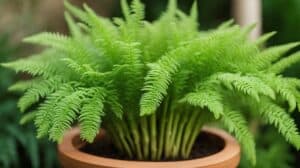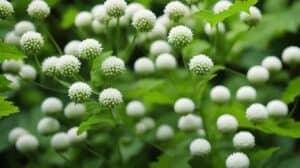The Turkish fig, also known as Ficus carica, is a popular fruit tree that is widely grown in many parts of the world.
This plant is native to the Mediterranean region and has been cultivated for thousands of years for its delicious and nutritious fruits.
Turkish figs are easy to grow and care for, making them a great addition to any garden or orchard.

When it comes to planting Turkish figs, there are a few things to keep in mind. These trees prefer a sunny location with well-draining soil.
They can be planted in the spring or fall, and should be spaced at least 10 feet apart to allow for adequate growth.
It’s also important to water the tree regularly, especially during the first few years of growth, to help establish a strong root system.
In terms of care, Turkish figs are relatively low-maintenance. They don’t require much pruning, and only need to be fertilized once or twice a year.
However, it’s important to keep an eye out for pests and diseases, as these can affect the health and productivity of the tree.
With proper planting and care, a Turkish fig tree can provide delicious, healthy fruits for many years to come.
Understanding the Turkish Fig

Botanical Profile
The Turkish Fig, also known as Ficus carica, is a deciduous tree that belongs to the mulberry family.
It is native to the Middle East and western Asia and is widely grown in the Mediterranean region, including Turkey, Greece, and Italy.
The tree can grow up to 30 feet tall and has a spreading canopy with large, lobed leaves that are up to 10 inches long.
The fig fruit is an inverted flower with a sweet, juicy flesh that is surrounded by a tough skin.
Historical Significance
The Turkish Fig has a rich history and has been cultivated for thousands of years.
It is believed to have originated in the Middle East and was introduced to Europe by the ancient Greeks and Romans.
The fig was highly valued in ancient times and was a staple food for many civilizations.
It was also used for medicinal purposes and was believed to have healing properties.
In Turkey, the fig is a symbol of abundance and fertility and is an important part of the country’s culinary culture.
Turkish figs are known for their rich flavor and are used in a variety of dishes, including desserts, salads, and savory dishes.
The fig is also an important ingredient in Turkish delight, a popular sweet treat that is enjoyed throughout the country.
Overall, the Turkish Fig is a fascinating plant with a rich history and cultural significance.
By understanding its botanical profile and historical significance, growers can better appreciate and care for this valuable fruit tree.
Planting Your Ficus Carica
Choosing the Right Location
When it comes to planting your Ficus Carica, it is important to choose the right location. The plant prefers a warm and sunny spot, away from strong winds.
It is also important to choose a location with well-draining soil to prevent waterlogging, which can damage the roots.
Soil Requirements
The Ficus Carica plant prefers well-draining soil that is rich in organic matter.
Before planting, it is recommended to mix the soil with compost or well-rotted manure to provide the plant with the necessary nutrients.
The soil pH should be between 6.0 and 6.5.
Planting Procedure
When planting your Ficus Carica, dig a hole that is twice as wide and deep as the root ball. Gently remove the plant from its container and loosen the roots.
Place the plant in the hole, making sure that the top of the root ball is level with the soil surface.
Backfill the hole with soil and firmly press it down around the plant. Water thoroughly to settle the soil and remove any air pockets.
It is important to keep the soil moist but not waterlogged, especially during the first few weeks after planting.
Mulching around the plant can help to retain moisture and suppress weeds.
By following these planting tips, you can ensure that your Ficus Carica plant gets off to a good start and thrives in your garden.
Ongoing Care and Maintenance

Watering Schedule
Turkish figs require consistent watering to thrive. During the growing season, it is recommended to water the plant deeply once a week.
However, if the soil feels dry to the touch, it’s important to water the plant more frequently.
During the dormant season, watering can be reduced to once every two to three weeks.
Fertilizing and Nutrients
Fertilizing is crucial for the health and growth of Turkish figs.
A balanced fertilizer, with equal parts nitrogen, phosphorus, and potassium, should be applied in the early spring before new growth appears.
In addition to a balanced fertilizer, adding compost or organic matter to the soil can provide the necessary nutrients for the plant.
Pruning Techniques
Pruning is important to maintain the shape and size of the Turkish fig plant.
It’s recommended to prune the plant in late winter or early spring before new growth appears.
Remove any dead or diseased wood, as well as any branches that cross or rub against each other.
It’s also important to thin out the center of the plant to allow for better air circulation and sunlight penetration.
By following these simple care and maintenance tips, gardeners can enjoy a healthy and fruitful Turkish fig plant for years to come.
Common Challenges and Solutions

Pest Management
Turkish fig trees are vulnerable to a variety of pests, including aphids, spider mites, and scale insects.
These pests can cause damage to the leaves, fruit, and branches of the tree, which can lead to stunted growth and reduced fruit production.
To manage these pests, it is important to regularly inspect the tree for signs of infestation.
If pests are detected, a targeted insecticide can be used to control them.
Alternatively, natural predators such as ladybugs and lacewings can be introduced to the area to help control the pest population.
Disease Prevention
Turkish fig trees can also be susceptible to a variety of diseases, including fungal infections and bacterial blight.
These diseases can cause damage to the leaves, branches, and fruit of the tree, which can lead to reduced fruit production and even death of the tree.
To prevent these diseases, it is important to maintain good tree hygiene by removing dead or diseased branches, and to avoid overhead watering, which can promote the growth of fungal spores.
Additionally, a regular fungicide treatment can be applied to the tree to help prevent the spread of disease.
By taking these steps to manage pests and prevent disease, Turkish fig growers can ensure a healthy and productive tree for years to come.
Frequently Asked Questions

How should I plant a Brown Turkey fig tree for optimal growth?
To plant a Brown Turkey fig tree, choose a sunny location with well-draining soil. Dig a hole twice as wide and as deep as the root ball of the tree.
Place the tree in the hole and backfill with soil, making sure to tamp down the soil to remove any air pockets.
Water the tree thoroughly after planting and add a layer of mulch around the base of the tree to retain moisture.
What care tips can I follow to maintain a healthy Ficus carica indoors?
To maintain a healthy Ficus carica indoors, place the tree in a bright, sunny location and water it regularly, making sure the soil is moist but not waterlogged.
Fertilize the tree every two weeks during the growing season with a balanced fertilizer.
Prune the tree as needed to maintain its shape and remove any dead or diseased branches.
What are the best practices for pruning a Brown Turkey fig tree?
The best time to prune a Brown Turkey fig tree is in late winter or early spring before new growth begins.
Remove any dead or diseased branches and prune back any branches that are crossing or rubbing against each other.
Keep the center of the tree open to allow for good air circulation.
Can you provide advice on growing a Turkish fig tree in a container?
To grow a Turkish fig tree in a container, choose a large container with good drainage and fill it with a well-draining potting mix.
Place the tree in a sunny location and water it regularly, making sure the soil is moist but not waterlogged.
Fertilize the tree every two weeks during the growing season with a balanced fertilizer.
Prune the tree as needed to maintain its shape and remove any dead or diseased branches.
What is the expected height and growth rate of a Brown Turkey fig tree?
A Brown Turkey fig tree can grow up to 20 feet tall and has a moderate growth rate.
However, the height and growth rate of the tree can be controlled through pruning.
During winter, what specific care should be given to a Turkish fig tree?
During winter, a Turkish fig tree should be protected from freezing temperatures by covering it with a blanket or burlap.
Water the tree sparingly during the winter months, making sure the soil does not become waterlogged.
Prune the tree in late winter or early spring before new growth begins.














